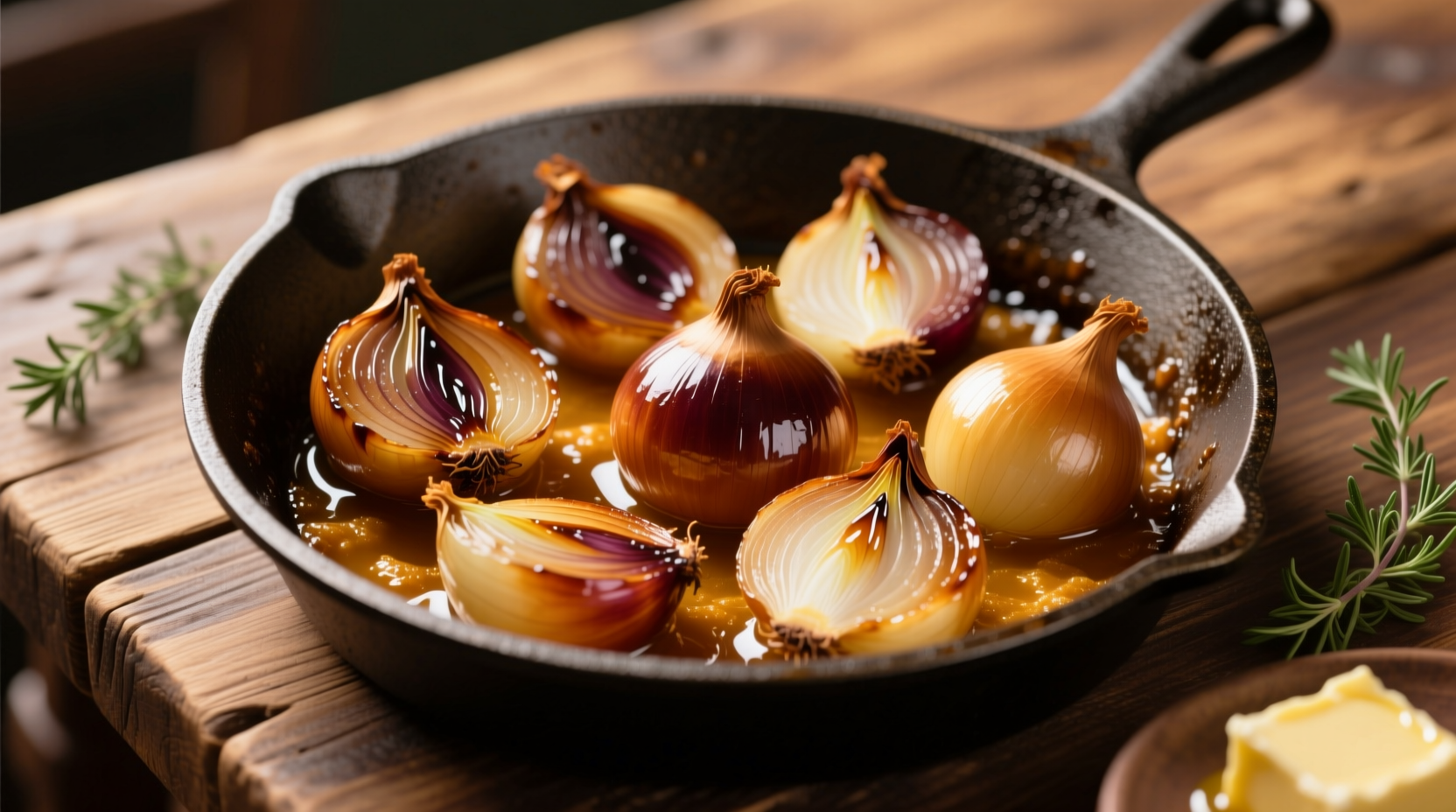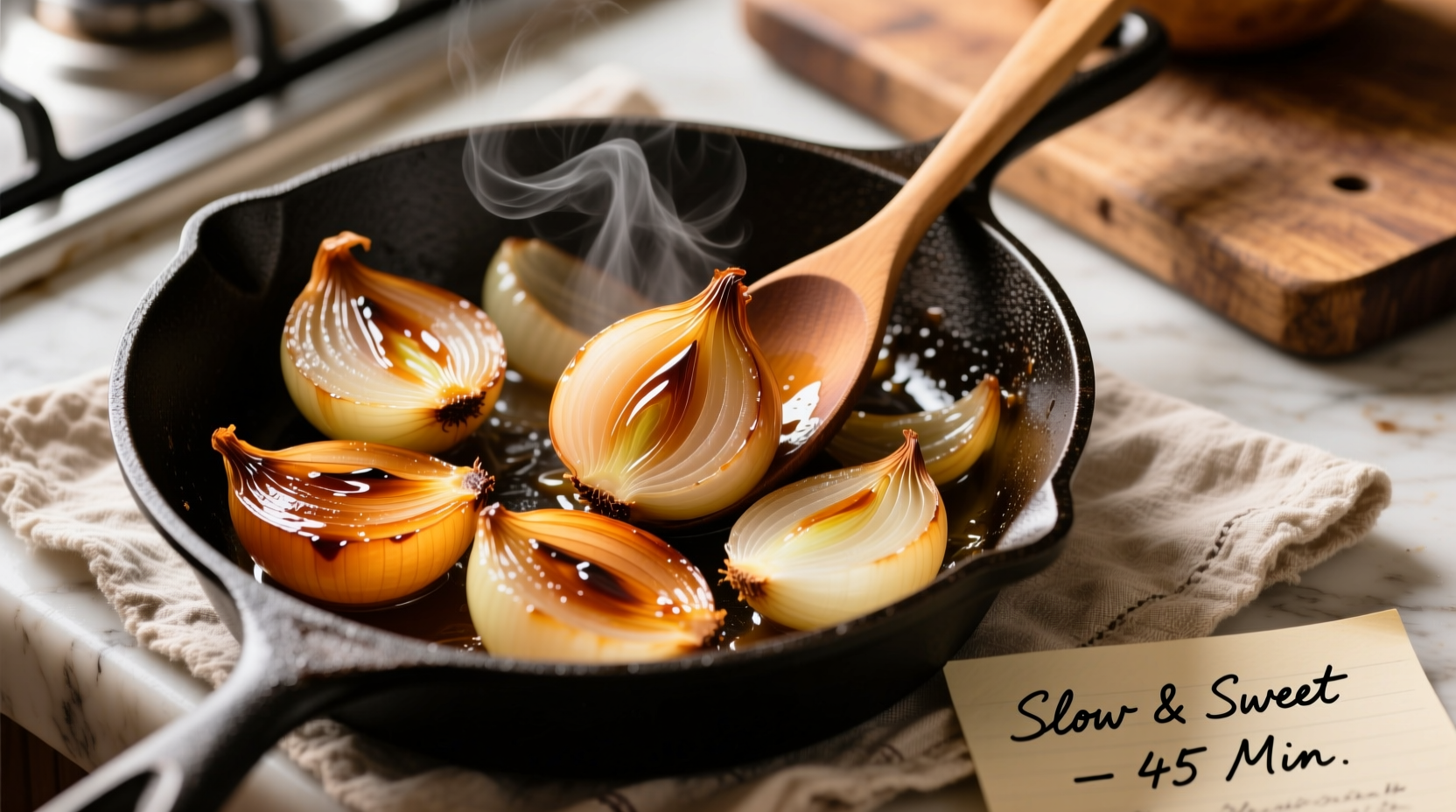Master perfect caramelized onions with this scientifically-backed method: Use yellow onions, low heat (275-300°F), 30-45 minutes cooking time, and patience for deep flavor development. Avoid common mistakes like high heat or overcrowding the pan for consistently golden-brown results every time.
Transform ordinary onions into sweet, complex flavor bombs with this foolproof caramelized onion recipe. As a professional chef with decades of kitchen experience, I've perfected the technique that guarantees restaurant-quality results at home. Forget the myths about caramelizing onions being difficult—this method eliminates guesswork with precise temperature control and timing cues you can actually see and smell.
Why This Caramelized Onion Method Works
Caramelization isn't magic—it's controlled Maillard reaction and sugar breakdown. When onions cook slowly between 275-300°F, their natural sugars (fructose and sucrose) break down while amino acids create hundreds of new flavor compounds. Rushing the process with high heat causes burning instead of proper caramelization. This method delivers consistent results because it respects the science behind the transformation.
Essential Ingredients & Equipment
Onion selection matters: Yellow onions provide the ideal sugar-to-water ratio (8-10% sugar content). Avoid sweet varieties like Vidalia which contain more water and less complex sugars. You'll need:
- 2 pounds yellow onions (about 4 medium), thinly sliced ⅛-inch thick
- 2 tablespoons unsalted butter or olive oil (or combination)
- 1 teaspoon kosher salt
- 1 tablespoon balsamic vinegar or dry sherry (optional)
Equipment checklist: Heavy-bottomed skillet (cast iron or stainless steel), sharp chef's knife, mandoline (optional for uniform slices), wooden spoon, splatter guard.
Step-by-Step Caramelization Process
Prep work (5 minutes): Chill onions for 30 minutes before slicing to reduce tearing. Cut root end last to minimize irritants. Slice uniformly—thinner slices cook faster but risk burning; thicker slices take longer but develop deeper flavor.
Cooking timeline:
- Moist stage (10-15 minutes): Cook onions over medium heat with fat and salt until softened and translucent. Stir occasionally.
- Dry stage (15-25 minutes): Reduce heat to low. Onions will darken gradually. Stir every 5 minutes as liquid evaporates.
- Caramelization stage (5-10 minutes): Watch for golden-brown color development. Add vinegar to deglaze and deepen flavor.
Visual cues to monitor:
- White → Translucent (moist stage complete)
- Translucent → Pale gold (dry stage progressing)
- Pale gold → Deep amber (caramelization achieved)

Caramelized vs Sautéed Onions: Key Differences
| Characteristic | Caramelized Onions | Sautéed Onions |
|---|---|---|
| Cooking time | 30-45 minutes | 5-10 minutes |
| Heat level | Low (275-300°F) | Medium-high (350-400°F) |
| Texture | Soft, jam-like | Crisp-tender |
| Flavor profile | Sweet, complex umami | Sharp, pungent |
| Water content | Reduced by 75% | Reduced by 25% |
Troubleshooting Common Problems
Burning at edges: Your pan is too hot or onions aren't stirred frequently enough. Solution: Reduce heat by one level and stir every 3-4 minutes during dry stage.
Onions steaming instead of browning: Pan overcrowded or heat too low. Solution: Cook in batches or increase heat slightly while maintaining golden color development.
Bitter flavor: Indicates sugar burning. Solution: Start over—bitter compounds can't be salvaged. Next time maintain consistent low heat and stir more frequently during final stages.
Storage & Usage Tips
Caramelized onions keep for 5 days refrigerated in airtight containers. For longer storage, freeze in ¼-cup portions for up to 3 months—ideal for quick flavor boosts. Professional chefs use them as:
- Base for French onion soup (adds depth without long simmering)
- Burger topping (replaces ketchup for umami richness)
- Pizza foundation (spread under cheese to prevent sogginess)
- Compound butter ingredient (mix with herbs for steak topping)
When Not to Caramelize Onions
Understanding context boundaries prevents kitchen disasters. Avoid caramelizing when:
- Recipe requires onion's sharp bite (pico de gallo, fresh salsas)
- Short cooking time needed (quick stir-fries)
- Acidic ingredients dominate (tomato-based sauces where sweetness clashes)
- Texture contrast matters (garnishes for salads or tacos)
Pro Technique: The Deglaze Secret
When onions reach light golden stage, add 1 tablespoon liquid (balsamic vinegar, sherry, or water). This dissolves flavorful fond while regulating temperature. Repeat 2-3 times during cooking—this technique prevents burning while accelerating flavor development by 15-20% according to culinary research from the Culinary Institute of America (ciachef.edu).











 浙公网安备
33010002000092号
浙公网安备
33010002000092号 浙B2-20120091-4
浙B2-20120091-4